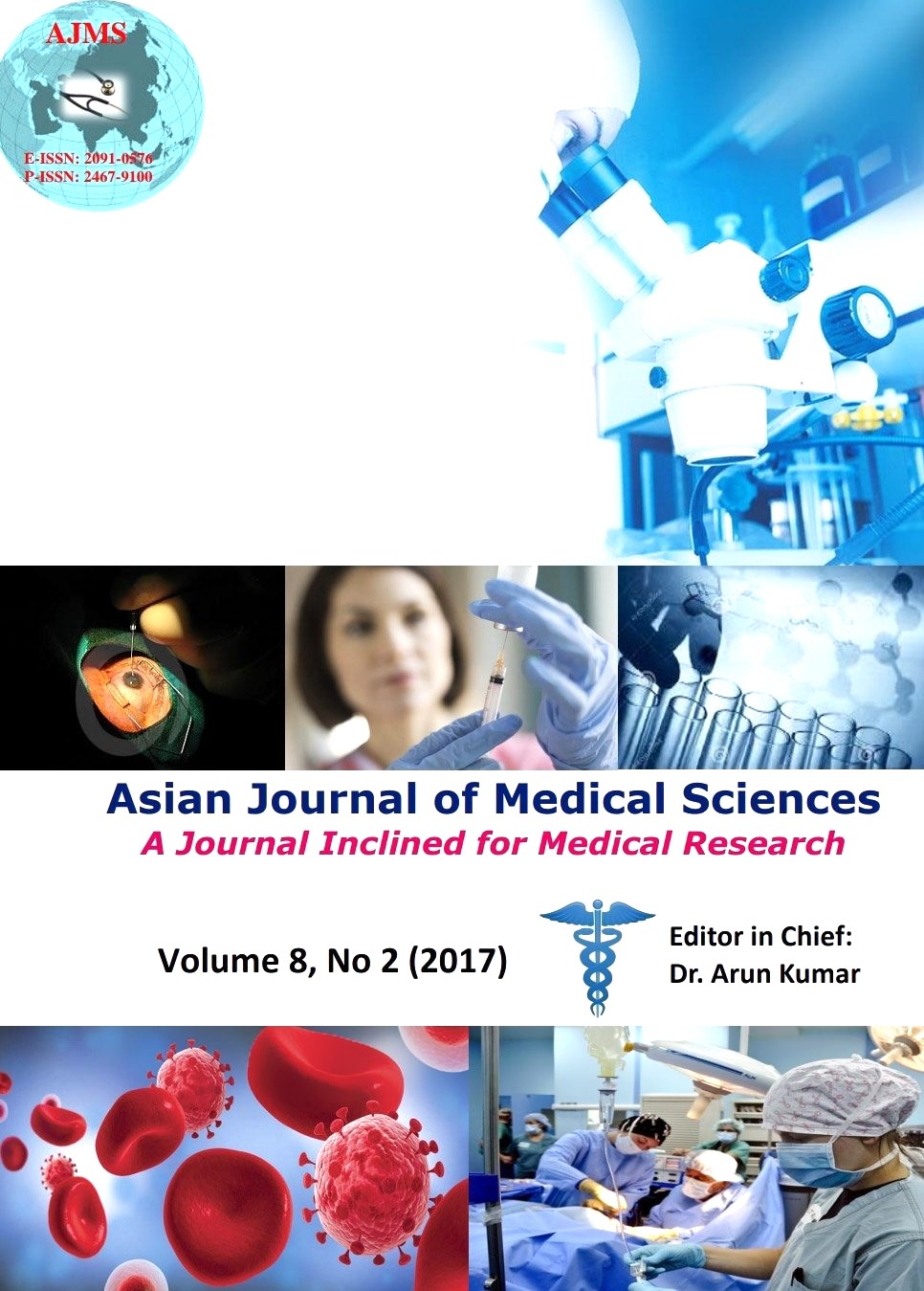CT head findings in suspected cases of head injury
Keywords:
CT Brain, Head injury, Contussion, HaemorrhageAbstract
Background: Head injury is one of the leading causes of morbidity and mortality throughout the world. Fall injury is the main cause of head trauma followed by road traffic accidents (RTA) and physical assault. Every victim with altered level of consciousness must be evaluated for brain injury. Radiological evaluation has undergone dramatic changes with the advent of computed tomography (CT) as it can precisely define the nature and location of the culprit lesion(s).
Aims and Objective: To identify the major CT scan findings in suspected cases of Head injury.
Materials and Methods: Three hundred seventeen patients of age 4 years and above, with suspected cases of head injury attending emergency department of TUTH during a period of 3 months (28 June 2012 to 28 September 2012) were included in this study. Non-contrast CT scan of head was performed in a single slice Hitachi Spiral CT scanner and 10 mm axial slices of head without any interslice gap were obtained at 15-20 degrees to the canthomeatal line. Data analysis was performed in SPSS v.21.0 software.
Results: From 317 patients studied 198(62.5%) were male and 119 (37.5%) were female. Head injury was more common in male. 80(25.23%) were below 15 years of age, 221(69.73%) were between 16 to 65 years and only 16(5.04%) were above 66 years of age. The mean age was 28.57 years. In 239(75.4%) of patients the CT scan was normal. The most common cause of head injury was fall which was found in 210(66.2%) patients followed by RTA 82(25.9%) and Physical Assault 25(7.9%). Fall as a cause of head injury was more common in children and old people, with the RTA being more common in adults and adolescents. The most common positive finding in CT was contusion which was found in 32(10.1%), 25(7.9%) had SDH, 11(3.5%) of the patients had EDH, 10(3.2%) had SAH. Headache was found to be nonspecific for predicting positive CT findings.
Conclusion: CT was found highly sensitive in demonstrating fractures and was considered the modality of choice when imaging suspected cases of head injury and in emergency patients due to its accuracy, reliability, safety and wide availability.
Asian Journal of Medical Sciences Vol.8(2) 2017 76-81
Downloads
Downloads
Published
How to Cite
Issue
Section
License
Authors who publish with this journal agree to the following terms:
- The journal holds copyright and publishes the work under a Creative Commons CC-BY-NC license that permits use, distribution and reprduction in any medium, provided the original work is properly cited and is not used for commercial purposes. The journal should be recognised as the original publisher of this work.
- Authors are able to enter into separate, additional contractual arrangements for the non-exclusive distribution of the journal's published version of the work (e.g., post it to an institutional repository or publish it in a book), with an acknowledgement of its initial publication in this journal.
- Authors are permitted and encouraged to post their work online (e.g., in institutional repositories or on their website) prior to and during the submission process, as it can lead to productive exchanges, as well as earlier and greater citation of published work (See The Effect of Open Access).




